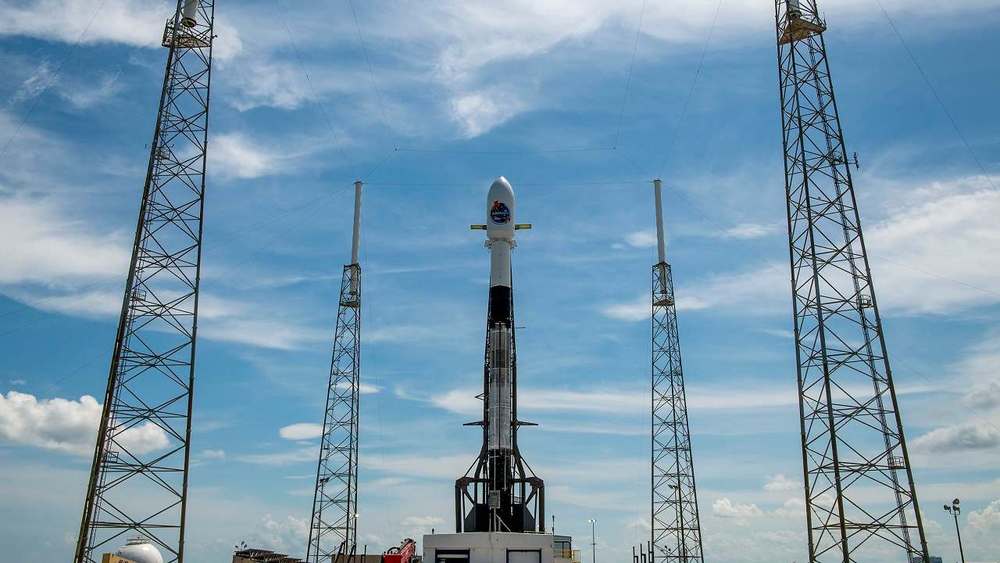Amazon is still testing the concept in hopes of realizing its goal of unmanned deliveries for Prime members.



An artificial intelligence (AI) technology made by a firm co-founded by billionaire Elon Musk has won praise for its ability to generate coherent stories, novels and even computer code but it remains blind to racism or sexism.
GPT-3, as Californian company OpenAI’s latest AI language model is known, is capable of completing a dialogue between two people, continuing a series of questions and answers or finishing a Shakespeare-style poem.
Start a sentence or text and it completes it for you, basing its response on the gigantic amount of information it has been fed.

Ira Pastor, ideaXme life sciences ambassador interviews Professor Dr. Hiroshi Ishiguro, the Director of the Intelligent Robotics Laboratory, of the Department of Systems Innovation, in the Graduate School of Engineering Science, at Osaka University, Japan.
Professor Ishiguro is also the Director of the Advanced Telecommunications Research Institute International (ATR), a private company supported by industry, government and academia, with the aim of promoting fundamental and innovative R&D activities, as well as contributing to society in a wide range of telecommunication fields, and is active in such fields as neuro- / knowledge science, intelligent robotics, machine language translation, and wireless communication.
He is also Chief Technology Advisor Vstone Co. Ltd., a commercialization / technology transfer organization set up to promote his inventions.
Professor Ishiguro’s lab works at the intersection of computer vision, robotics and artificial intelligence, concentrating on the idea of making a robot that is as similar as possible to a live human being, and believes it may be possible to build an android in the near future that is indistinguishable from a human, at least during a brief encounter.
Professor Ishiguro received his Ph.D. in Robotics and Computer Sciences from Osaka University, and has attended Yamanashi University, Kyoto University, University of California, and Wakayama University, where he has worked in a range of areas from distributed sensor systems and interactive robotics.
On this ideaXme episode we will hear from Professor Ishiguro about:
Ira Pastor, ideaXme life sciences ambassador and founder of Bioquark interviews Matthew Richardson, Canadian author of “Threatened and Recently extinct Vertebrates of the World”, primatologist and conservationist.
“My forthcoming book, Threatened and Recently-extinct Vertebrates of the World, required me to assess and place some 15,000 species and subspecies within an updated biogeographic framework. I also had to coin common names for more than 5,000 of them; figure out an entirely new system of ecoregions based on elevation to nest within my “realms and regions.” find a way to standardize language across the globe in a way that would be mostly acceptable to everyone; and somehow make it interesting for the reader. It is twice the length of “War and Peace.” I’ve gone through three publishers, it took me ten years to write, and I’ve received zero funding in the process” Matthew Richardson.
Ira Pastor comments:
Matthew began his professional career as a writer of historical non-fiction, although for the past several years he has mainly worked on academic projects related to wildlife conservation.
In 2001 he published “The Royal Book of Lists: An Irreverent Romp Through Royal History from Alfred the Great to Prince William.”
For much of the next decade he worked as a primatologist and taxonomist for the U.S.-based NGO Conservation International, co-authoring various books and academic papers. Notable among these were Lemurs of Madagascar (book) and the massive primate volume to the Handbook of the Mammals of the World series (for which he also produced all the maps).
US$400 million for healthy aging and elder care.
Ira Pastor ideaXme life sciences ambassador interviews Shelley Lyford, President and Chief Executive Officer of West Health, the Gary and Mary West Foundation, and the West Health Institute.
Ira comments:
According to the World Health Organization (WHO), the world is on the brink of a demographic milestone. Since the beginning of recorded history, young children have outnumbered their elders. In about 5 years’ time, the number of people aged 65 or older will outnumber children under age 5. Driven by falling fertility rates and remarkable increases in life expectancy, population aging will continue, and even accelerate. The number of people aged 65 or older is projected to grow from an estimated 524 million in 2010 to nearly 1.5 billion in 2050, with most of the increase in developing countries.
Key questions arise:

“Gravitational waves from what could be the most massive black hole merger yet has been detected by researchers at the Laser Interferometer Gravitational-wave Observatory (LIGO) and its discovery is also raising questions about how massive black holes are formed.
When scientists made the first direct detection of gravitational waves from a binary black hole merger in February 2016, not only did they prove Einstein right, they also discovered another curious quirk; the audibl… See More.
The detection of the heaviest black hole merger to date is also the first clear detection of an ” intermediate-mass” black hole.

Using the venom from 312 honeybees and bumblebees in Perth Western Australia, Ireland and England, Dr. Ciara Duffy from the Harry Perkins Institute of Medical Research and The University of Western Australia, tested the effect of the venom on the clinical subtypes of breast cancer, including triple-negative breast cancer, which has limited treatment options.
Results published in the prestigious international journal npj Precision Oncology revealed that honeybee venom rapidly destroyed triple-negative breast cancer and HER2-enriched breast cancer cells.
Dr. Duffy said the aim of the research was to investigate the anti-cancer properties of honeybee venom, and a component compound, melittin, on different types of breast cancer cells.

In a recent study conducted in mice, researchers became one step closer to that understanding, discovering that exercise actually strengthens the brain’s resilience to stress. Exercise helps animals cope with stress by enabling an uptick in a crucial neural protein called galanin, the study suggests. This process influences stress levels, food consumption, cognition, and mood.
Leveraging this finding, researchers were able to genetically tweak even sedentary mice’s levels of galanin, shifts that lowered their anxious response to stress.
The study’s authors explain that this study helps pin down the biological mechanisms driving exercise’s positive effects on stress. While further human experiments are needed to confirm these findings, the researchers have practical advice for people looking to get these benefits: perform regular, aerobic exercise.

FP Trending Sep 02, 2020 12:48:13 IST
SpaceX postponed the launch date of its next batch of Starlink satellites to 3 September. The space firm was going to loft the 60 satellites aboard the Falcon 9 rocket yesterday morning.
The official handle of Elon Musk’s company tweeted about the delay, saying the team will be utilising the extra time to review data. Now the launch from Launch Complex 39A has been set at 6.16 pm IST (8.46 am EDT) on 3 September.